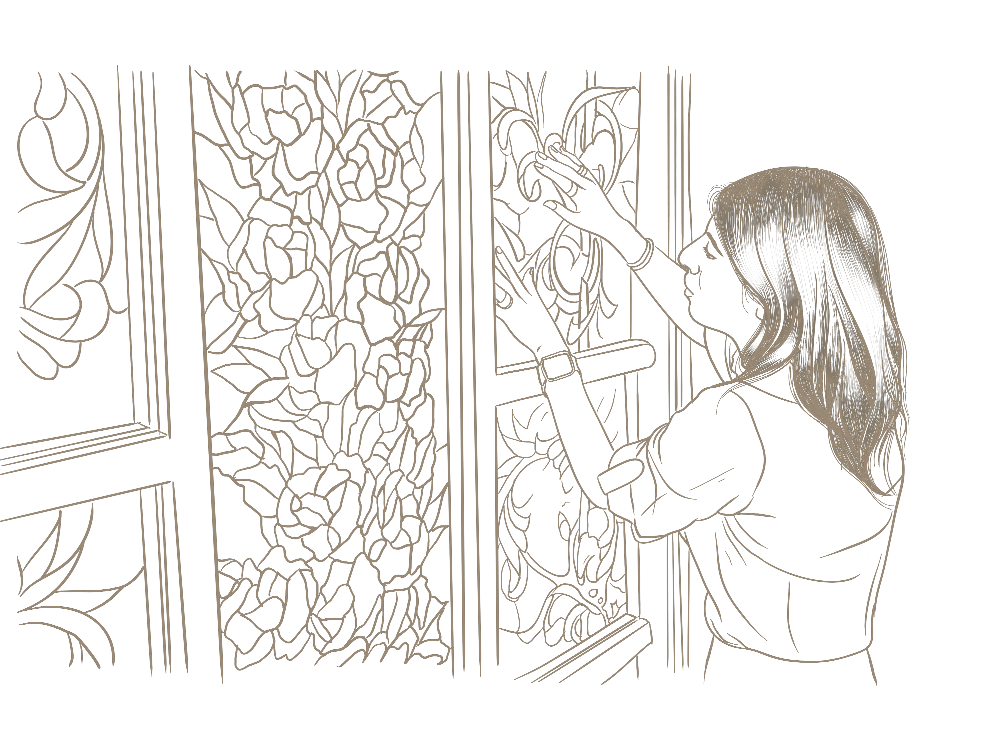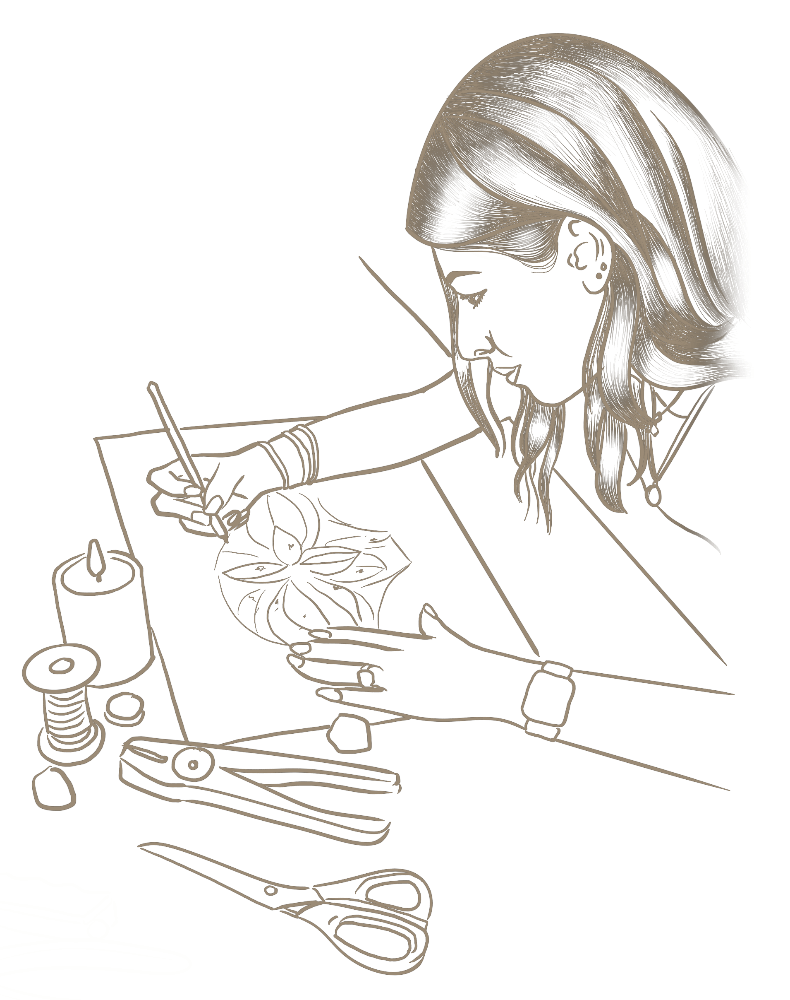Glass Mosaics & Stained-Glass date back centuries, historically in churches & palatial heritage monuments around the world, creating traditions, experiences & memories. Lady J Studio pays homage to these rich traditions by applying the same practices of the original Tiffany method, to current designs with contemporary palettes, and a minimal twist on tradition! Traditional practices have historically paved the way for the revival of these applications, in league with crystal, porcelain and designer bespoke furniture, upon delving into the intricate design & workmanship it requires. The striking result of stained-glass, is a combination of a meticulous process involving a precise assembly executed with pristine flows of lead lines enriched by custom designs in LadyJ’s signature style, beautifully enhanced by the sheer brilliance of the glass itself. The true craftsmanship lies in the detailed approach, practice & materials, having no bearing on scale but rather technique. Since its establishment, LadyJ prides in following the original Tiffany practices to carefully handcraft these one-of-a-kind, enduring pieces that can be passed down for generations!
In our unique design studio, the magnificence lies in the selection of hand rolled & machine-made glass which have been internationally imported from the UK, US, Italy & Germany, over the years. We use an array of materials from transparent, semi-opaque, iridescent, textured, and mottled glass to create depth playing with textures & hues lifting the intricacies of light and shadow. Correspondingly for glass mosaics, the glass and surface are treated in a similar manner to which a painter would treat a canvas. This can be seen in the incorporation of unconventional materials such as semi-precious stones, buttons, marble, glass nuggets, crystals & sliced agate, to name a few. Various elements that initially appear as patchwork, concoct together forming textures, to create distinct pieces. Along with the aesthetic pleasure, tailored glass mediums are incredibly sustainable art forms. Unlike normal glass, these mediums are more resistant to damage due to the technical manner in which they are created. As proved by time and history, the art forms are attributed with the quality longevity.



